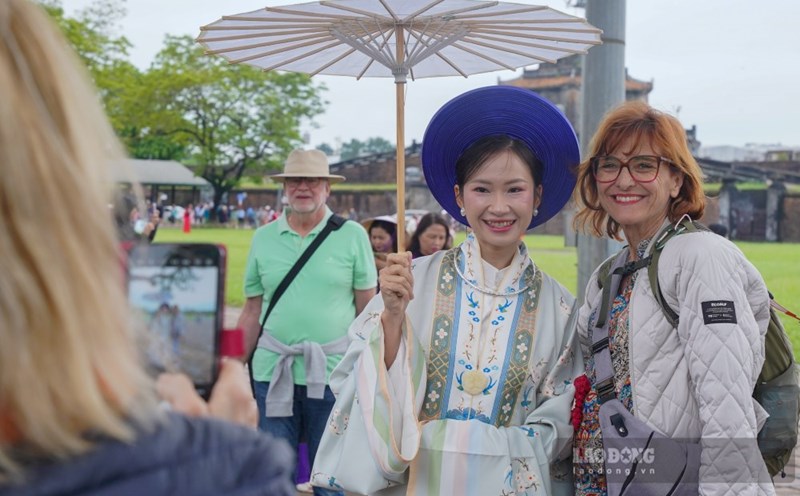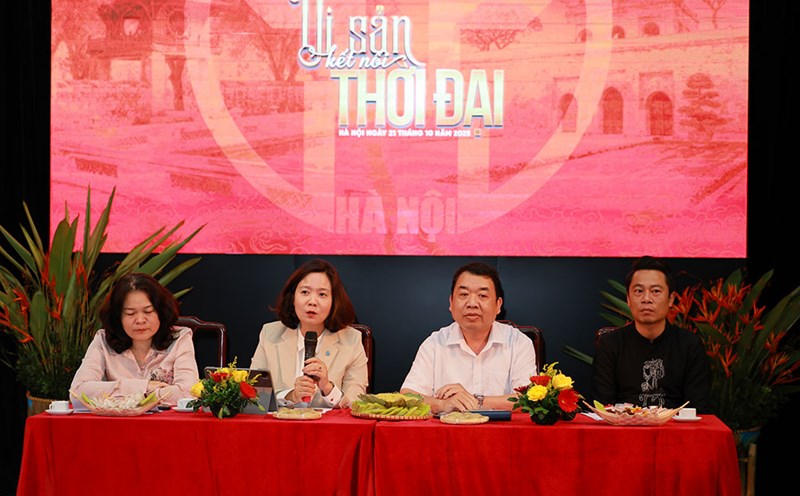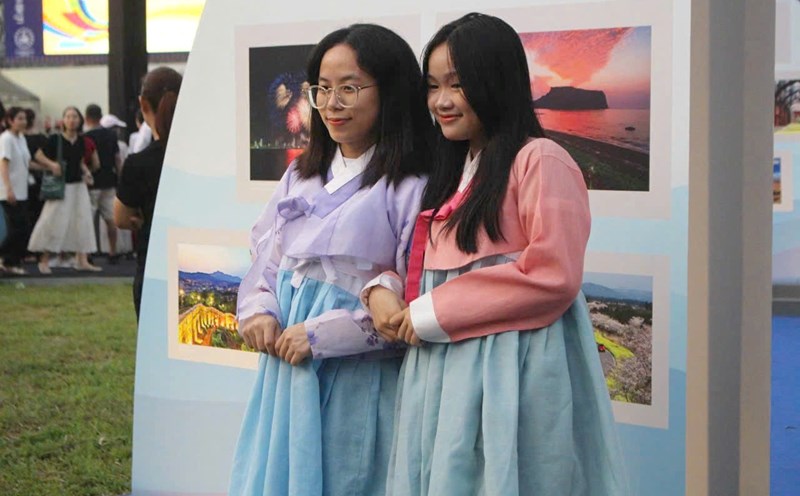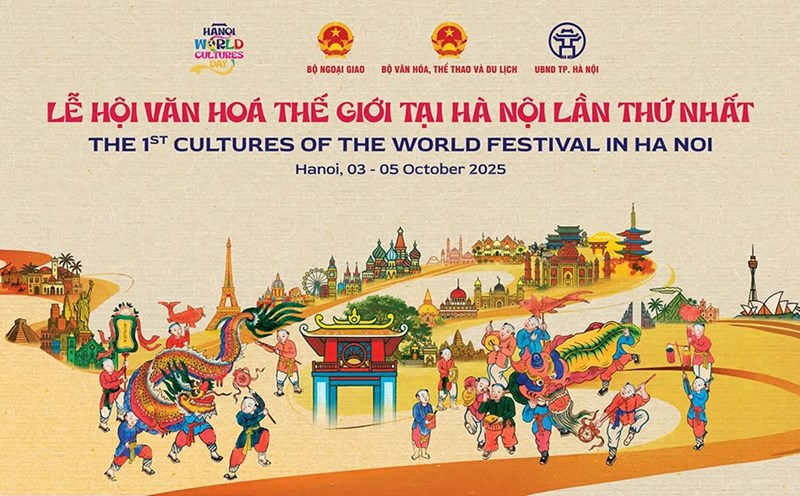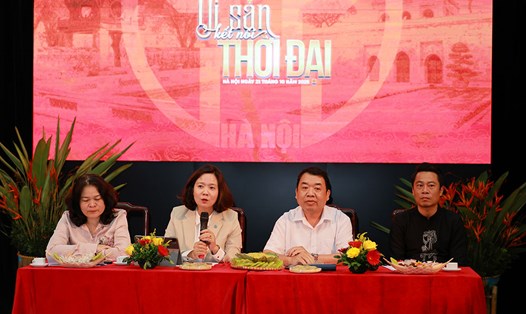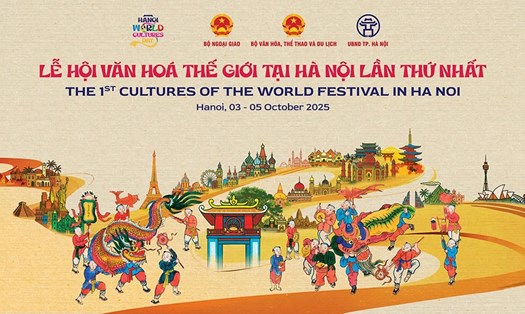I brought a map of Foodtour Hai Phong with the excitement to taste the taste of the port city along the journey: Go to eat, listen, and feel.
A companion, who was from Hai Phong, asked me: "When coming to Hai Phong, what do you think about first?". I was a bit startled: " well, this Iron Market, royal poinciana flowers and... Do Son, the waves are bustling". The friend laughed loudly: "Hai Phong is now merging with the old Hai Duong, many things are very good. For example, Hai Phong cuisine is already a "kingdom".
We set foot in a small shop on Lach Tray Street. The bowl of crab noodle soup is placed on the table, suspected to be smoke-laden, the wavy broth is amber-colored, fragrant with the scent of field crab. The soft and chewy brown rice cake noodles are accompanied by a little green pillow vegetable, fried onions and a few slices of betel leaf cake. The sweetness of crab blends with the aroma of inland fields, making me feel like I have heard stories about the diligent people in the fields and on the wharves.
The whole journey was only wrapped up in one day, but it seemed not enough for me to fully enjoy the flavors of Hai Phong. Crab noodle soup, crab spring rolls, banh tet, spicy snails, vu ngan... each dish is a story, a smile, a unique breath of the city. When the train left the station in the afternoon, I looked back at the streets that still smelled of fried and fragrant, fragrant ginger, and realized: "Foodtour Hai Phong" was not only a journey of taste, but also a journey of memories and emotions.
However, this trip to Hai Phong, I heard another, interesting information: Hai Phong is on the journey to become the "City of... music". Will this transformation lose the position and mark of tourists who have been in Hai Phong for so long?
It turns out that Hai Phong has a project "Building Hai Phong into a Music City" launched by the Department of Culture - Sports and Tourism, aiming to bring Hai Phong into the UNESCO network of Music Creative Cities.
Behind that vision is an innovative mindset: Music is not only for performance, but also for making the economy - through festivals, public performance spaces, international exchange programs and music tourism. Each event, each creative product contributes to increasing the value of the city's image and brand.
The leader of the Department of Culture, Sports and Tourism of Hai Phong once shared: Music, as well as cuisine, is a cultural feature that touches the hearts of tourists. We want to turn each journey to Hai Phong into an emotional experience - where people can listen, see, and feel the soul of the city.
The reason Hai Phong wants to identify itself as a "music city" is all for a reason: Hai Phong is the cradle of many big names in the Vietnamese music industry: Musician Van Cao with "Manich Song", Hoang Quy with "Co Doi Duong", Doan Chuan - Tu Linh with "Gui Gio cho may ngan cong di", or Ngo Thuy Mien with "Thien nay co don em"...
From those melodies, people recognize a very unique Hai Phong quality - opened-up, romantic but profound. Music here is not only art, but breath, a rhythm of life, the pride of the people of the city of red phoenixes.
In the suburban villages, there are still festival drums, Cheo singing, Ca Tru, and wind and song sung on the river wharf. In the central area, street music nights, youth band festivals, and concerts at the Opera House always attract a large number of people. Hai Phong does not create music to show off, but to nurture the urban soul with culture - the most sustainable asset of every city.
That is not enough, Hai Phong already has valuable "seeds" such as a rich folk music heritage from singing, Cheo, ca Tru to drum and dance. Modern cultural infrastructure: Opera House, Convention Center, square, outdoor stage and dynamic artist community: Young musicians, indie bands, street groups are gradually shaping a new identity.
In addition, Hai Phong is also promoting art education in schools, encouraging community music activities, organizing international events such as: ASEAN Music Festival - Sea of Islands 2025, or Street Music Week. All create a musical ecosystem - where people not only enjoy but also participate, create and be proud of their own culture.
In the project, Hai Phong is not separated from urban life by music. In the vibrant "Foodtour", visitors not only enjoy crab noodle soup, crab spring rolls, and spicy bread, but also listen to live music from every street corner and coffee shop. The Music & Food Street models - combining cuisine, music and street art performances, create a unique cultural tourism product.
The ambition to become a "UN UNESCO Music City" is a big step, requiring Hai Phong to both integrate internationally and preserve its own identity. In Vietnam, currently only Da Lat City (old) is on the list of " UNESCO's Music City".
According to experts, to achieve this title, the city needs to continue to invest in creative infrastructure, build policies to support artists, develop the music industry (recording, production, copyright, performance), and especially increase international exchanges.
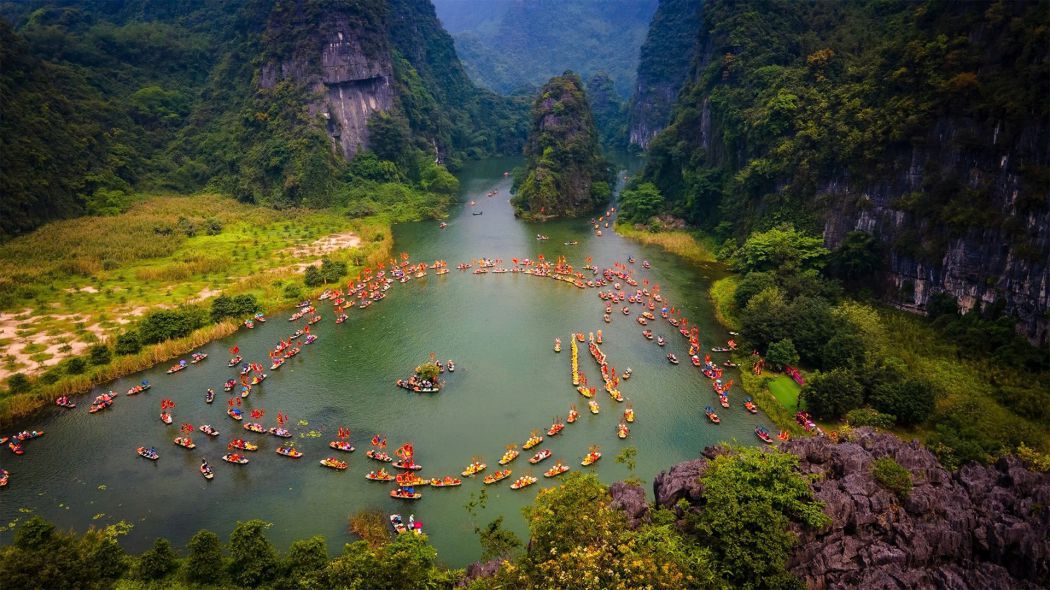
**
From the story of Hai Phong's efforts to "identify" itself, creating a new direction in the process of promoting the cultural industry also creates open directions for other localities: Having potential, having many values but struggling to position itself, struggling to find differences and prominence so that when mentioned, it knows what that locality has.
This is a difficult problem, 2 years ago, when attending "Shaping Ninh Binh identity associated with building local brands", I heard Chairman of Ninh Binh Provincial People's Committee - Pham Quang Ngoc say this very enthusiastically.
In the continuation of identity issues, local identity is the core values, outstanding and unique characteristics of the locality, which can be clearly felt, helping to identify a locality and distinguish one place from another; in which, partly has natural origin, and most of it is created by people there in the process of living, working and developing. These are the characteristics that reflect the spirit of the community in a determined region, recognized through the way they organize their lives (residence, living, labor production) and respond to specific natural and cultural conditions of the locality.
In the development of the new context, the position of the country and the locality, factors such as cultural values and brand values have become an important resource and driving force for rapid and sustainable development. The strength of cultural roots, along with cultural factors in the economy, is identified as one of the three pillars of development of the country and the locality. Culture is considered the " core of the nation, expressing the identity of the nation", and at the same time is a "soft power" contributing to strengthening the position and capacity of the country and locality.
In the current integration and development process, each locality must increasingly pay attention to competing with other localities in attracting investment, human resources, tourists and reputation... The competitive environment is a reality and the way localities strive to create and promote the unique characteristics of their localities is the decisive factor for success or being behind. A locality with a brand - clear, attractive and unique - is the foundation to turn the locality into an investment attraction, a tourist destination and an ideal place to live.
Building and developing local brands is to build and develop a unique identity for the locality; not simply a communication strategy, a slogan, a few images or a symbol ( logo) for the locality, but includes many, many more things, that is the invisible value that brings a positive awareness of a locality. It is a strategic process to develop a long-term vision for a locality, with the goal of connecting and attracting related entities to contribute to dominating and shaping positive awareness of a locality.
Up to now, after the merger, Ninh Binh has more room to focus on preserving and promoting heritage values associated with socio-economic development. Cultural and spiritual tourism is considered a strategic direction, helping to bring heritage into contemporary life. Combining conservation with creativity, tradition with modernity, local identity with global trends is the way for Ninh Binh to develop cultural industry into a key economic sector. This is also the key to building a brand in the ancient capital that is both rich in identity, dynamic and integrated.
**
The 2025 Autumn Fair opens as a giant painting of Vietnamese identity, a gathering of cultural quintessence, products and people from all over the country. Taking place from October 25 to November 4, 2025 on a campus of nearly 130,000m2, the 2025 Autumn Fair brings together more than 3,000 booths of 2,500 domestic and foreign enterprises, with the participation of 34 provinces and cities. The 5 thematic subdivisions are designed in harmony between trade and culture, creating a wide, colorful space, where each locality brings its own story, a unique "taste" of their homeland.
Not only a place to introduce OCOP products, typical goods or regional agricultural products, the fair is also a "res meeting" of spiritual values - where each ao dai, each Then line, Quan Ho style, each friendly smile contributes to depicting the diverse and vibrant portrait of Vietnam.
Amidst the bustling crowd, Hai Phong booth appeared like the breath of the sea. Handmade products associated with fishermen's lives, processed seafood, or miniature port ship models all remind us of a dynamic port city, where people are the masters of storms. The sound of invitation and laughter blends with the salty taste of the sea wind - all of which make people feel like they are standing in the middle of Lach Huyen port, where hundreds of windy sails stretch out to sea.
Entering the Khanh Hoa booth, the emerald green of the sea and islands and the aroma of salt, seaweed, and bird's nest spread. This place tells the story of a land favored by nature, both modern and peaceful. Tourism products, seafood processing, essential oils, handicrafts... not only show economic potential but also reflect the deep love of the sea of the people of Tram Huong.
In another corner, Thai Nguyen brings a gentle scent of young tea, like a warm greeting from the lush green midland. Each bud of sweet soup, each cup of hot tea is the crystallization of the early morning mist and diligent hands. Thai Nguyen booths not only sell products - they invite guests to "reward" a cultural feature, an elegant philosophy of life that has existed for hundreds of years in this land.
Or the booth "Cao Bang - Four seasons of products" stands out with the brocade color and aroma of Trung Khanh chestnuts. Tourists are like lost in the "fairy land", where each season is a separate story: Spring with banh chung, sticky rice with five colors; Summer with ancient broccoli and indigo tea; Autumn with honey, sticky rice noodles; Winter with dong vermicelli, soai oil, cinnamon essential oil.
Here, there are not only products, but also the sound of Tinh lute, clear Then voice and the skillful hands of the Nung and Dao Tien people who are embroidering flowers, weaving fabric, and making notebooks. Visitors can sit down, print patterns made of beeswax with them, taste black jelly, banh mi, dried meat in the kitchen... It feels like going through the boundaries of a cultural region, where all senses are awakened.
Cao Bang's tourism space in the " quintessence of Vietnamese Culture" area is also full of attraction - displaying images of UNESCO Global Geopark: Non Nuoc Cao Bang, Ban Gioc Waterfall, Nguom Ngao Cave... Those photos move people's hearts, like a call to the peaceful border.
The gathering place of interest for the fair is the "Tinh hoa Thu Ha Noi" area, where about 30 talented artisans perform traditional crafts: Ceramics, silk, male reed painting, lacquer painting, he-To molding... Skilled hands, attentive eyes, laughter mixed with hammering, curse-frame - all in harmony into the profound music of the profession, of the land and the Hanoi people.
Visitors not only admire, but also touch, try, and chat with artisans, to understand why each simple item contains both creativity and national pride.
Deputy Minister of Culture, Sports and Tourism Ho An Phong said: The 2025 Autumn Fair is a very special fair, the first fair in Vietnam to be held on a national scale and with the direct participation of the Government. The participation of the cultural sector with products of Vietnamese cultural industries in this fair is very important. In particular, participating in a space for commodity markets of Vietnamese cultural industries, introducing the quintessence of Vietnamese culture to the public and domestic and international enterprises. This is also a special trading destination for the fair. Promote the development of Vietnam's cultural industries".
According to statistics, Vietnam's cultural industries have contributed 4.4% to GDP, aiming to reach 7% by 2030. The 2025 Autumn Fair is a test, a stage for culture to "transform" into economic power, while affirming the creative and dynamic Vietnamese brand on the world map.
In that journey, the fact that localities such as Hai Phong, Ninh Binh, Cao Bang or Hanoi are finding a way to identify and create a unique cultural identity is the trend to more clearly define strengths, create competition to contribute to common development.

